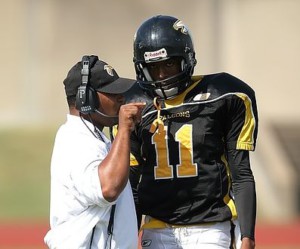 In this last post on “Respect for People” or “Respect for Humanity,” I will look at all the difficulties in having respect for others. There is often the cultural aspect. There is the problem that everybody is different. One great (but not always easy tool) is Feedback! I will also talk a bit more about Toyota.
In this last post on “Respect for People” or “Respect for Humanity,” I will look at all the difficulties in having respect for others. There is often the cultural aspect. There is the problem that everybody is different. One great (but not always easy tool) is Feedback! I will also talk a bit more about Toyota.
Cultural Differences
 Respect for People becomes even more difficult if you try to show respect for humanity across different cultures. In Northern Europe, it is often a sign of respect for a higher-ranked person to lower his status. Royalty often uses public transport just like everybody else. Here’s King Olaf V of Norway on the subway in 1973. The conductor wanted to offer him a free ride, but the king insisted on paying for the trip. In many Asian cultures, this is unacceptable and would totally confuse the subordinates. For comparison, here is a picture of how the Thai king and his queen ride the subway, which by itself is exceedingly rare (they prefer helicopters, I think). And somehow, I don’t think they paid for a ticket. Although, the current Thai king is a bit … odd … even to other Asians. (Only links to the images, since I don’t have copyright, sorry).
Respect for People becomes even more difficult if you try to show respect for humanity across different cultures. In Northern Europe, it is often a sign of respect for a higher-ranked person to lower his status. Royalty often uses public transport just like everybody else. Here’s King Olaf V of Norway on the subway in 1973. The conductor wanted to offer him a free ride, but the king insisted on paying for the trip. In many Asian cultures, this is unacceptable and would totally confuse the subordinates. For comparison, here is a picture of how the Thai king and his queen ride the subway, which by itself is exceedingly rare (they prefer helicopters, I think). And somehow, I don’t think they paid for a ticket. Although, the current Thai king is a bit … odd … even to other Asians. (Only links to the images, since I don’t have copyright, sorry).
Another example is Germany. We Germans are known for being very direct, which often comes across as rude. A Korean working for a German company in Germany tried to adapt… and came across as very rude to his German colleagues, since he did not know the German social norms of how direct/rude you can be with whom and when. Hence, showing respect is even more difficult if it is in a different culture.
This is also a topic that you can go into in great depth. One particular book that I liked was The Culture Map by Erin Meyer. It helped me to understand a lot more on the differences between cultures.
So, How to Show Respect for Humanity?
 So, now you know ho to show respect for humanity. Be nice, but not too much. Be aggressive, but not too much. Do this, but not too much. Don’t do that… but not always. Turn left unless you should have turned right.
So, now you know ho to show respect for humanity. Be nice, but not too much. Be aggressive, but not too much. Do this, but not too much. Don’t do that… but not always. Turn left unless you should have turned right.
Yes, I am aware that this is not too helpful. Sorry, it is a very difficult topic! The problem is that everybody is different. The problem is that it depends a lot on the person you are and the person you are dealing with. Like everybody else, I get along with some (hopefully most) people, but there are some who I don’t get along with. I of course blame the other side for that 😉 . While you sometimes can avoid people you don’t like, sometimes you can’t, especially in the workplace. Hence, you have to learn to show respect and get along with most people.
Fortunately, there is one solution:
Feedback

To become better at dealing with others, you need feedback. Honest feedback! It is easy to fall into the trap and think that it is all the other person’s fault, or that the other person won’t be angry because he understands how you meant it. In sum, it is hard to really see yourself if you can only see yourself from the inside. But it has to be honest feedback, and that’s where the difficulties start.
If you are a person in power, your subordinates may be hesitant to give you honest feedback. There are plenty of companies around where a disagreement with the boss leads to the end of a career. If anything, feedback from below must be anonymous. A mentor or coach can also give you feedback. Good feedback makes you feel good, but critical (but still constructive) feedback will help you to become better. Yet, all to often critical feedback is not wanted. You should want it! It helps you to grow.
What about Toyota?
 Toyota is well known for the whole idea of respect for humanity, and they do a lot of things well. There are some things that Toyota does well. Suppliers rank it as a good customer, often much better than other car makers. To give just one other example, during the Pandemic Toyota received AUD 18 million in aid in Australia since their sales went down. Shortly thereafter, their sales unexpectedly recovered again. Toyota then approached the Australian tax office to pay back the assistance. Not many companies would give back 18 million just to be a “responsible corporate citizen“. (Source, with thanks to Matt Mafrici for the info)
Toyota is well known for the whole idea of respect for humanity, and they do a lot of things well. There are some things that Toyota does well. Suppliers rank it as a good customer, often much better than other car makers. To give just one other example, during the Pandemic Toyota received AUD 18 million in aid in Australia since their sales went down. Shortly thereafter, their sales unexpectedly recovered again. Toyota then approached the Australian tax office to pay back the assistance. Not many companies would give back 18 million just to be a “responsible corporate citizen“. (Source, with thanks to Matt Mafrici for the info)
However, it would be foolish to assume that Toyota has achieved godliness in this area. Like all companies, Toyota is run by people, and, somehow, we are not that good in dealing with other people. If you are a full-time employee, Toyota will take care of you – while also demanding a lot on working time. The working times in Japan are pretty brutal (see my post on The Dark Side of Japan), and Toyota is no exception. It was well known for encouraging feedback from all levels, but this is slipping, and the culture at Toyota is changing.
As well, if you are not a full-time employee and only a temporary worker, then the nicety and the respect seems to be missing. Temp workers are treated much worse and are hired and fired as needed. In Japan, you will get a permanent position after five years, so all temporary workers are fired after five years at the latest. Female staff is often hired from subcontractors that are close to Toyota. After five years, they are fired and hired by an almost identical subcontractor for the next five years. There is little security and no chance for promotion.
So, Toyota does a lot of things right, and there are many positive examples that you can find online (some of them even from me). But, just like many other companies, Toyota also does many things wrong.
Overall, it is easy to talk about respect for humanity, but it is much more difficult to do it (as it is to write about it). We all know lots of examples where someone showed a lack of respect. This is easy to see. However, few of us have examples where we ourself did not show proper respect to others. It is very hard to judge yourself. And, since we don’t know any example of ourself disrespecting others, we assume that we always respect others. Well… everybody assumes that. Try to think of situations where you yourself may have shown a lack of respect, and think about how you could show more respect. Nevertheless, I hoped these blog posts on respect for humanity helped you to understand what it means, and maybe even gave you some inspiration on improving yourself. Now, go out, respect humanity by actions and not by words, and organize your industry!
Series Overview
- Respect for People – Introduction
- Respect for People – Why and How
- Respect for People – It’s Difficult…
Other Good Articles on Respect for People
I am not the only one writing about respect. Here are some other online articles that I found useful:
- Michel Baudin “This “respect for people stuff””
- Michel Baudin More on Toyota’s “Respect for Humanity”
- Mark Grabham “Toyota, Respect for People (or “Humanity”) and Lean“
P.S.: These blog posts are based on a question by Mário Puccini Coelho. Thanks for asking 🙂

Hi Christoph,
Personally, I tend to believe that the notion of RESPECT is UNIVERSAL in its meaning. What do I mean by that? In short, being RESPECTFUL does NOT – as Frank Woolard has argued – involve being sensitive to people’s FEELINGS. In this regard, people’s feeling are nearly infinitely variable from person to person and no general rule of thumb can be effectively applied to being sensitive to feelings.
In contrast, a much more UNIVERSALLY APPLICABLE form of showing/manifesting RESPECT, involves CREATING, SUSTAINING, and EVOLVING A [WORK] ENVIRONMENT which affords everyone the same level of opportunity and support when it comes to being able to pursue becoming the most that can be in the context of pursuing their organization’s COMPELLING TRUE NORTH ORIENTATION. As is true for data without a CONTEXT, the notion of attempting to show/manifest RESPECT without a CONTEXT is…. MEANINGLESS!
That may well be the basis for why Ohno believed his actions/behaviors on the gemba were considered to be a manifestation of his RESPECT FOR PEOPLE/HUMANITY. And it is likely the same basis for why Frank Woolard came to the conclusion about sowing/manifesting RESPECT that he did.